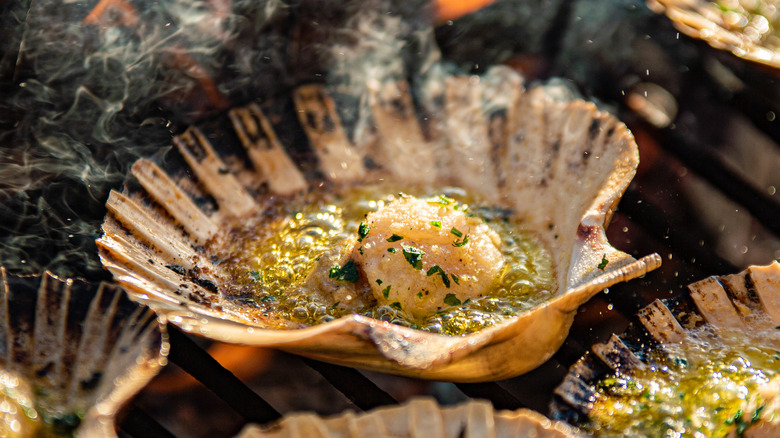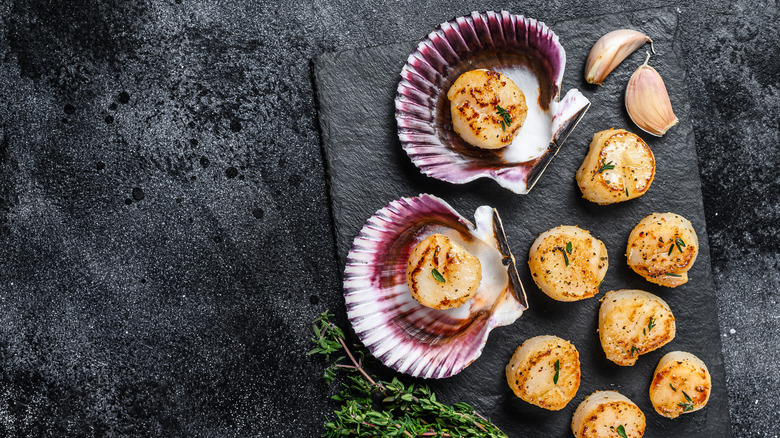You Can Use Every Part Of A Scallop
Food sustainability is an idea that the general consensus can agree on is important, and one of the biggest concerns for sustainable shoppers is avoiding food waste. The United States wastes 108 billion pounds of food every year, equating to 130 billion meals and $408 billion in food per Feeding America. However, the idea of casually wasting food wasn't even considered before and during World War II — really, throwing anything away was laughable. According to Utah State University, the U.S. government encouraged people to "Fight Food Waste in the Home" and save their bacon grease so it could be used for military purposes. After the War, however, food was overproduced and cheap and became way easier to waste, per USU Digital Exhibits.
If cultures across time and space, from the corn-growing pre-Incan South Americans to the rice paddy farmers of China's Han Dynasty, figured out ways of sustainably producing food, so too can we (via The Conversation). One thing we can begin to do with more regularity is to utilize an ingredient to its fullest potential. A primary example is our sea-friendly creature, the scallop.
Typically eaten in batches, these popular bivalves are prized chiefly for their sweet and tender meat; however, this is hardly all they are good for.
How to use a whole scallop including its shell
A perfect example of using a scallop to its utmost is how Edinburgh-based chef Dean Banks uses them as a highlight in his efforts to encourage food sustainability and practice what he preaches in his restaurant. The highlighted dish is Banks' riff on scallops with kimchi and Japanese dashi. He smokes the scallop roe to serve alongside the meat, uses the connector muscle as a substitute for bonito flakes to flavor the dashi, and makes butter from the scallop's mantle, which is the soft tissue that surrounds the meaty interior (via Food & Wine and Britannica). The only thing missing from Banks' presentation is the scallop shell itself.
The shell of the scallop is the only inedible part of the bivalve. It is not without its uses, however. The shell can easily be used as a presentation component, like Food Network's scallops that call for the halves. Outside of cooking, the shell need not go to waste. Ground seashells can also be repurposed as construction material or even turned into fertilizer for your garden (via Inquirer.net).
If there is that much potential in the humble scallop, what other common ingredients are we underutilizing? Something to think about.

